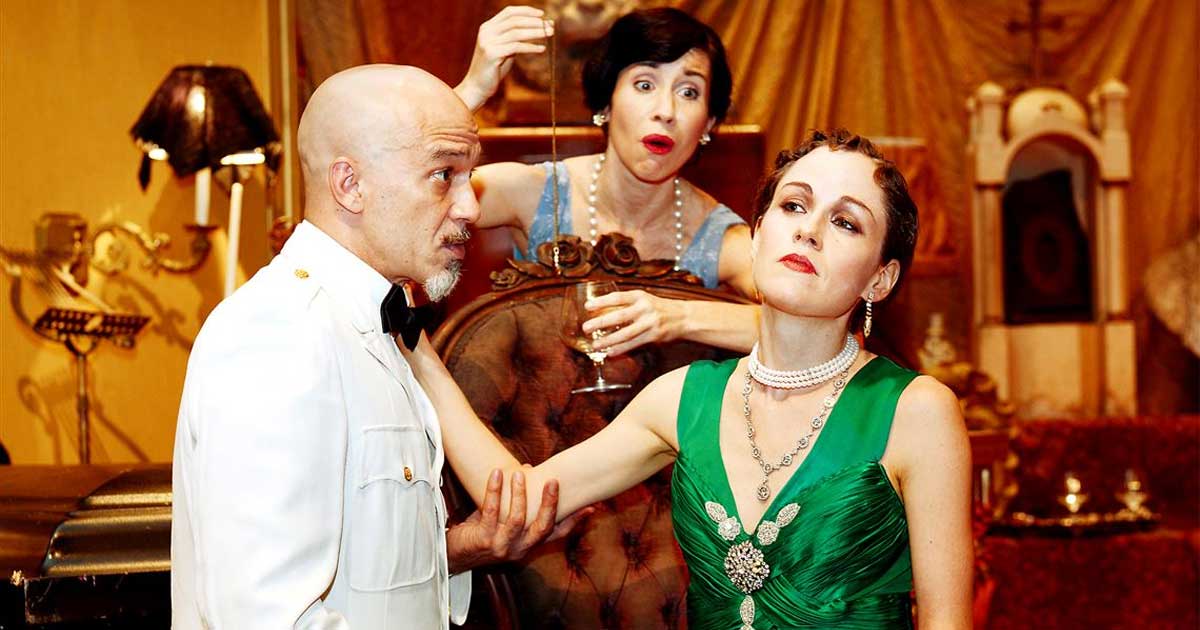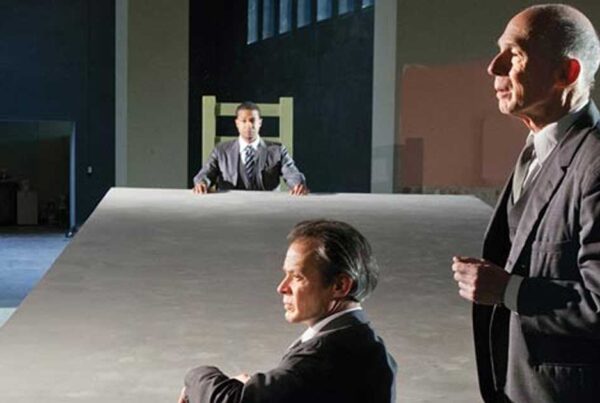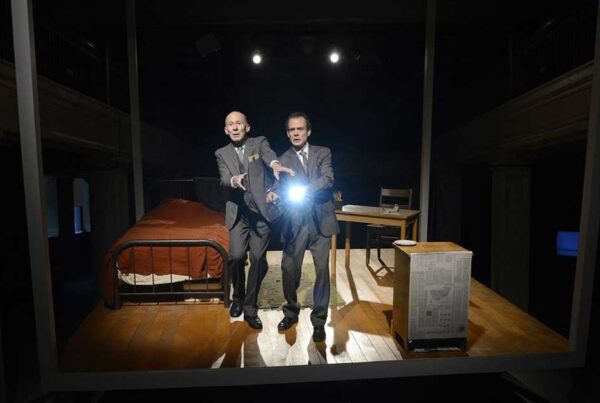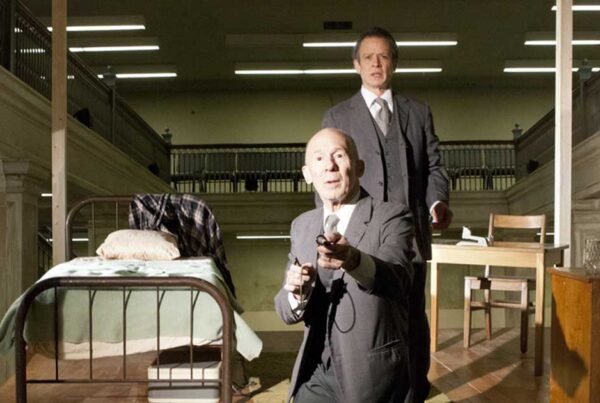
Pittsburgh Post-Gazette – If you ever wanted to follow actors around while watching a juicy drama unfold, here’s your chance to be a human camera.
At Quantum Theatre’s production of “Tamara,” which opens Thursday, choose a character whose story intrigues you and follow him or her from room to room, where you can sit or stand just a few feet away from the action.
This immersive theatrical experience is a key part of this show that features 10 actors, each of whom stars in his or her own story.
What else could you expect from a play set during the decadent year of 1927 in Italy, the country where Medicis and Borgias once did high dynastic drama on a grand scale? Italy’s foodies may have taught many of us to appreciate wine, cappuccino, pasta and gelato, but its rich culture gave us the poet Dante, the politician Niccolo Machiavelli, the filmmaker Federico Fellini and the fashion designer Donatella Versace. (And let’s not forget those rock stars of the Renaissance — Michelangelo and Leonardo da Vinci.)
On each night of the six-week run for “Tamara,” theatergoers will gather in the large biblical garden outside Rodef Shalom Congregation on Fifth Avenue in Shadyside and sip sparkling wine. Actors will address them and spell out the rules of this theatrical puzzle.
Dressing up is fine; wearing 1920s-era clothing is encouraged. Leave the high heels at home. Wear your new tennies, ballet flats or comfortable shoes so you can walk around the building while following an actor or two in this scripted play set during the dawn of Italian fascism, the era when Mussolini rose to power.
“It’s about power — political power and sexual power — and how we try to dominate others. It’s a very Italian story,” said the director, John Shepard, adding that Italy’s class structure included peasants who believed they would get more land by participating in World War I and aristocrats who continued to jockey for position and influence.
Inside Rodef Shalom, a massive architectural gem built by German Jews, many rooms have been transformed into the elaborately decorated villa of Gabriele d’Annunzio, an Italian war hero and poet whose verse inspired the nationalist movement that Mussolini later turned into fascism.
A great intellect and spendthrift with insatiable appetites for sumptuous decor and decorative women, d‘Annunzio wrote poetry that propelled Italy into World War I. As the play opens, the year is 1927 and the great man is in his 60s, enjoying a velvet house arrest at his villa on Lake Garda because Mussolini is paying the bills for his conspicuous consumption.
It was d’Annunzio who taught Mussolini about the power of personality, Mr. Shepard said.
During the show, famed portrait artist Tamara de Lempicka (Megan MacKenzie Lawrence) arrives to paint d’Annunzio’s picture. But the lusty literary lion, who is addicted to cocaine, is far more eager to seduce the Polish glamour puss than being captured on canvas. Past and present liaisons all play a part in the lives of these characters, including Luisa Baccara (Robin Abramson), one of d’Annunzio’s ex-lovers, and a maid named Emilia Pavese (Rachel McKeon), who is juggling three love interests.
During intermission, dinner — including appetizer, main course, dessert and red wine — will be served on the outdoor terrace, and each week, a different local caterer will provide the food (see sidebar). While dining, theatergoers can compare notes about what they have heard and witnessed. If you come with a group, split up so you can track different characters.
Near the outdoor terrace is a large, remarkable prop — a dark green 1931 Pierce-Arrow that’s in mint condition and has running boards. An anonymous donor lent it for the production.
Rodef Shalom Congregation’s elegant, spacious rooms are a perfect venue for “Tamara,” which was first staged in Canada in 1981 and later, in 1987, at New York’s Seventh Regiment Armory.
“It was important to have many different options of entering and exiting,” said Karla Boos, Quantum’s executive director, adding that there are two ways in and out of a bedroom called a “leda” that is normally a staff dining room and four ways to enter or exit the commons area, which has become a dining room.
Speaking of arrivals, audience members should enter the synagogue at its Devonshire Street side. However, the villa’s entrance is the first-floor Wecshler Gallery, an elegant round space.
Stephanie Mayer-Staley, who heads the design department at Point Park University’s Conservatory of Performing Arts, has transformed many of the synagogue’s spaces with all manner of statuary, Oriental rugs, ornate sconces, distinctive period furniture, decorative lamps and — egads — a stuffed warthog. There’s even an authentic Sicilian donkey cart with faces carved on its wheels.
Levy Hall, normally a setting for concerts or lectures, is d’Annunzio’s living room, complete with a stone coffin.
“He had his own coffin in his living room. He was obsessed with death,” said Ms. Boos, adding that a death mask is being made for Fermin Suarez, the actor playing d’Annunzio.
Il Vittoriale, d’Annunzio’s real home, is a well-documented museum that Ms. Mayer-Staley began studying in April. Every inch of it was decorated to the point that, “You would have to look for the bathtub in the bathroom,” she said.
A boardroom on the second floor is lined with built-in cabinets. Now, it’s d’Annunzio’s bedroom, the perfect private retreat for a man who owned 30,000 books. Many bronzes already live permanently in this space, but Francis Nowalk lent an especially elegant writing desk and distinctive lamps.
By contrast, the second-floor office of a fascist guard is spartan and tellingly devoid of books.
As in “Downton Abbey,” servants in this drama live downstairs where there are quarters for the maid, the chauffeur and the cast-off lover.
Ultimately, “Tamara” is “more about the experience and the event than the play itself,” Mr. Shepard said. “As the play moves toward the end, there are moments when you reconnect with a large part of the cast and audience.”




